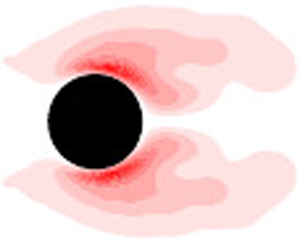Crossref Citations
This article has been cited by the following publications. This list is generated based on data provided by
Crossref.
Iima, Makoto
2021.
Phase reduction technique on a target region.
Physical Review E,
Vol. 103,
Issue. 5,
Asztalos, Katherine J.
Dawson, Scott T.
and
Williams, David R.
2021.
Modeling the Dynamics of Actuation on an Airfoil at Post-Stall Angles of Attack.
Nair, Aditya G.
Taira, Kunihiko
Brunton, Bingni W.
and
Brunton, Steven L.
2021.
Phase-based control of periodic flows.
Journal of Fluid Mechanics,
Vol. 927,
Issue. ,
Khodkar, M. A.
Klamo, Joseph T.
and
Taira, Kunihiko
2021.
Phase-locking of laminar wake to periodic vibrations of a circular cylinder.
Physical Review Fluids,
Vol. 6,
Issue. 3,
Asztalos, Katherine J.
Dawson, Scott T. M.
and
Williams, David R.
2021.
Modeling the Flow State Sensitivity of Actuation Response on a Stalled Airfoil.
AIAA Journal,
p.
1.
Loe, Innocentio A.
Nakao, Hiroya
Jimbo, Yasuhiko
and
Kotani, Kiyoshi
2021.
Phase-reduction for synchronization of oscillating flow by perturbation on surrounding structure.
Journal of Fluid Mechanics,
Vol. 911,
Issue. ,
Liu, Qiong
Sun, Yiyang
Yeh, Chi-An
Ukeiley, Lawrence S.
Cattafesta, Louis N.
and
Taira, Kunihiko
2021.
Unsteady control of supersonic turbulent cavity flow based on resolvent analysis.
Journal of Fluid Mechanics,
Vol. 925,
Issue. ,
Huang, Ya-Dong
Wang, Zhi-He
and
Zhou, Ben-Mou
2022.
Transition control of cylinder wake via Lorentz force.
Acta Physica Sinica,
Vol. 71,
Issue. 22,
p.
224702.
Kawamura, Yoji
Godavarthi, Vedasri
and
Taira, Kunihiko
2022.
Adjoint-based phase reduction analysis of incompressible periodic flows.
Physical Review Fluids,
Vol. 7,
Issue. 10,
Zhang, Kai
and
Haque, Md. Naimul
2022.
Wake interactions between two side-by-side circular cylinders with different sizes.
Physical Review Fluids,
Vol. 7,
Issue. 6,
Tamilselvam, Prashanth
Asztalos, Katherine J.
and
Dawson, Scott T.
2022.
Transient growth analysis of flow over an airfoil for identifying high-amplification, spatially-localized inputs.
Skene, Calum S.
and
Taira, Kunihiko
2022.
Phase-reduction analysis of periodic thermoacoustic oscillations in a Rijke tube.
Journal of Fluid Mechanics,
Vol. 933,
Issue. ,
Loe, Innocentio A.
Zheng, Tianyi
Kotani, Kiyoshi
and
Jimbo, Yasuhiko
2023.
Controlling fluidic oscillator flow dynamics by elastic structure vibration.
Scientific Reports,
Vol. 13,
Issue. 1,
Godavarthi, Vedasri
Kawamura, Yoji
and
Taira, Kunihiko
2023.
Optimal waveform for fast synchronization of airfoil wakes.
Journal of Fluid Mechanics,
Vol. 976,
Issue. ,
Iima, Makoto
2024.
Optimal external forces of the lock-in phenomena for flow past an inclined plate in uniform flow.
Physical Review E,
Vol. 109,
Issue. 4,
Shenhav Feigin, Doron
and
Shoshani, Oriel
2024.
Synchronization of non-weakly coupled aeroelastic oscillators.
Communications Physics,
Vol. 7,
Issue. 1,
Fukami, Kai
Nakao, Hiroya
and
Taira, Kunihiko
2024.
Data-driven transient lift attenuation for extreme vortex gust–airfoil interactions.
Journal of Fluid Mechanics,
Vol. 992,
Issue. ,
Kim, Youngjae
Godavarthi, Vedasri
Rolandi, Laura Victoria
Klamo, Joseph T.
and
Taira, Kunihiko
2024.
Influence of three-dimensionality on wake synchronisation of an oscillatory cylinder.
Journal of Fluid Mechanics,
Vol. 1001,
Issue. ,




